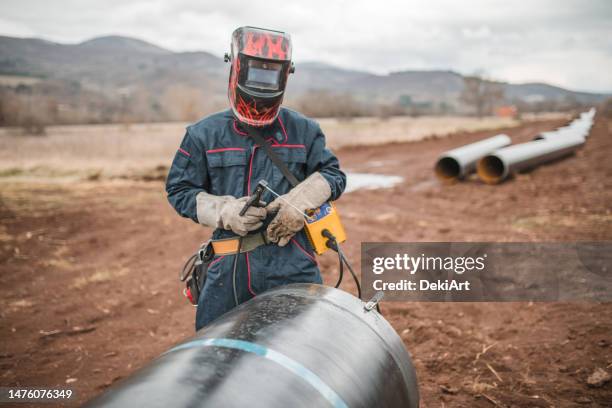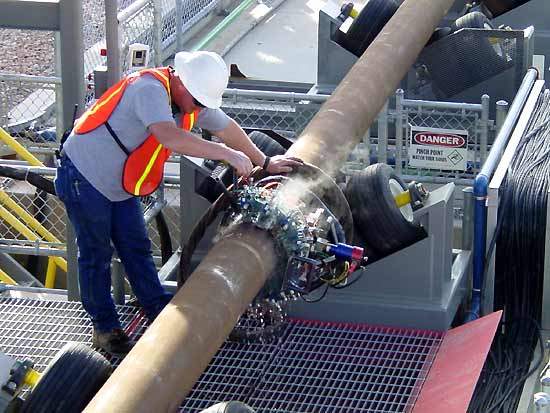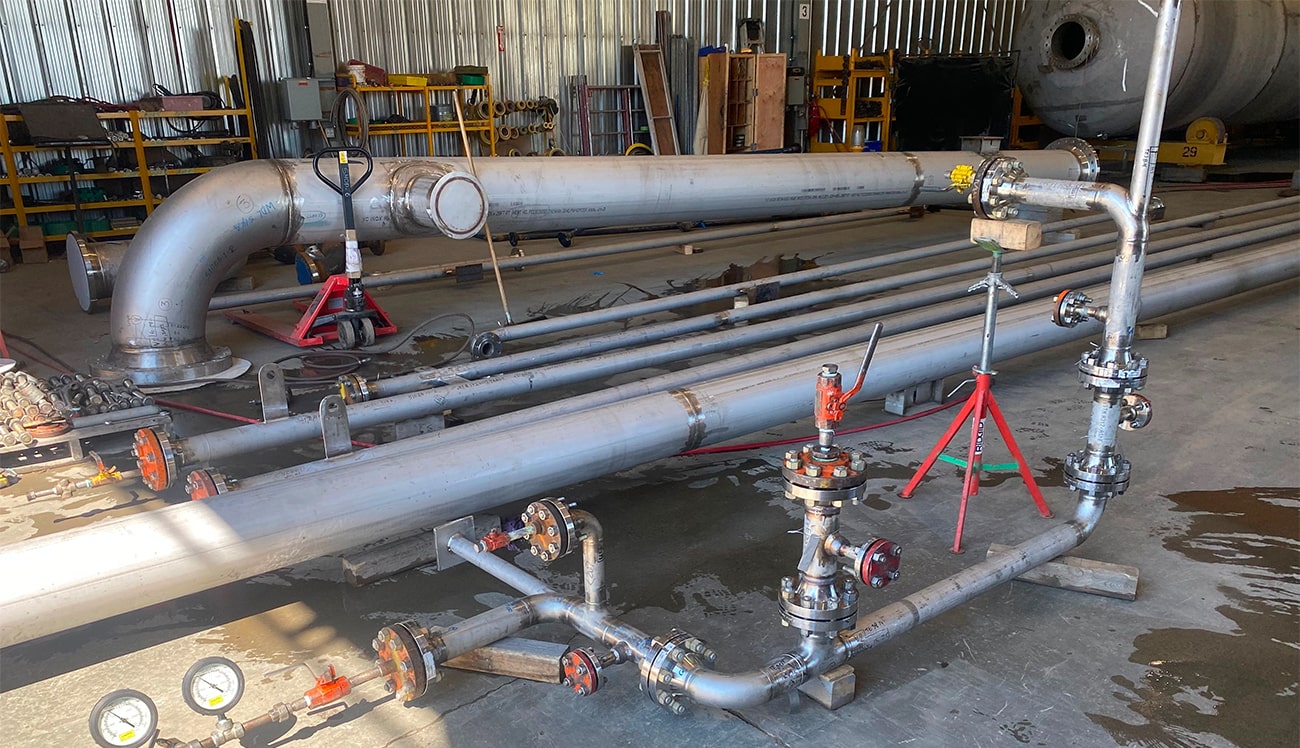Comprehensive Pipeline Welding Inspection: Protecting Infrastructure Honesty
Comprehensive Pipeline Welding Inspection: Protecting Infrastructure Honesty
Blog Article
Comprehensive Guide to Pipe Welding Examination: Making Certain Honesty and Security in Pipeline Building and Maintenance
The integrity and security of pipelines are vital in today's framework landscape, emphasizing the vital role of welding inspection in pipe building and construction and upkeep. Pipeline Welding Inspection. The intricacies included in welding evaluation raising pertinent questions about sector criteria and the evolving innovations that may redefine these techniques.

Value of Welding Assessment
Welding inspection plays a critical duty in making certain the integrity and safety of pipe systems. It acts as an essential procedure that validates the high quality and dependability of welded joints, which are typically one of the most prone points in pipe building. With methodical analysis, assessors can identify possible defects such as cracks, porosity, and incomplete blend, which may jeopardize the structural integrity of the pipeline.
The relevance of welding evaluation prolongs beyond mere compliance with sector requirements; it likewise safeguards public health and the atmosphere. Thorough inspections can improve the longevity of pipe systems, reducing the need for costly fixings and downtime.
Along with guaranteeing safety and security and compliance, welding examination promotes a culture of quality assurance within organizations. By prioritizing evaluation throughout the welding procedure, business can develop a reputation for integrity and excellence, ultimately causing raised consumer confidence and company opportunities (Pipeline Welding Inspection). Hence, the value of welding examination can not be overstated in the context of pipe building and upkeep
Secret Welding Processes
Numerous welding procedures are used in pipeline construction, each with its very own benefits and applications. Amongst one of the most commonly used methods are Protected Metal Arc Welding (SMAW), Gas Tungsten Arc Welding (GTAW), and Gas Metal Arc Welding (GMAW) SMAW is favored for its convenience and capability to perform well in different ecological conditions, making it ideal for field applications.
GTAW, usually referred to as Tungsten Inert Gas (TIG) welding, is acknowledged for its ability to create high-grade welds with exceptional control over warm input, making it excellent for thin-walled pipes and stainless-steel products. GMAW, or Metal Inert Gas (MIG) welding, uses high deposition prices and is efficient for massive projects, often used in the fabrication of pipelines in regulated environments.
Furthermore, Submerged Arc Welding (SAW) is made use of for its deep infiltration and high efficiency, particularly in the building of large-diameter pipes. Each of these procedures adds to the general stability and safety and security of pipeline constructions, enabling welders to pick one of the most ideal technique based upon product kind, task demands, and environmental problems. Recognizing these vital welding processes is vital for efficient pipeline welding examination.
Usual Issues and Their Influence

Porosity, characterized by tiny gas pockets caught within the weld, damages the material and can result in leakages. Splits, which may take you can look here place because of thermal stresses or inappropriate cooling, can propagate and result in structural failure under stress. Damaging, where the base metal is deteriorated along the weld bead, decreases the effective cross-section of the pipeline, increasing the risk of fracture.
Insufficient combination takes place when the weld metal does not effectively bond with the base steel, leading to weak areas that may fail under stress and anxiety. Slag addition, the entrapment of non-metallic material within the weld, can also compromise the joint's stability. Identifying and resolving these issues early in the construction process is crucial to making certain the lasting integrity and safety and security of pipeline systems, therefore protecting both the framework and the atmosphere.
Examination Tools and methods

Visual examination is the very first line of protection, permitting examiners to recognize surface irregularities, misalignment, or various other noticeable issues. Ultrasonic screening utilizes high-frequency audio waves to discover interior flaws, giving accurate deepness measurements and characterizing problems without damaging the weld. Radiographic screening makes use of X-rays or gamma rays to create photos of the weld, making it possible for the recognition of inner voids, splits, or incorporations.
Magnetic bit screening is particularly effective for finding surface and near-surface stoppages in ferromagnetic products. This method entails applying an electromagnetic field and great iron fragments to the weld, exposing problems through the buildup of Learn More Here bits at flaw websites.
In addition to these strategies, specialized devices such as automated ultrasonic screening tools and electronic radiography systems enhance assessment precision and efficiency, ensuring a comprehensive assessment of pipe welds throughout building and construction and upkeep.
Ideal Practices for Compliance
Sticking to finest methods for conformity in pipe welding examination is critical for ensuring the integrity and safety and security of the infrastructure. Organizations needs to develop a detailed quality administration system that aligns with industry requirements such as ASME, API, and AWS. This consists of developing thorough welding procedures that specify the methods, products, and credentials required for welders.
Regular training and accreditation of assessment employees are important to maintain high expertise degrees. Assessors must know with numerous non-destructive screening (NDT) techniques, consisting of ultrasonic testing, radiographic testing, and aesthetic examination, to effectively identify possible defects.
Documents plays a crucial function in compliance; maintaining precise documents of assessments, weld treatments, and employees certifications helps to make sure traceability and accountability. Set up audits and evaluations of welding practices ought to be carried out to recognize locations for renovation and make certain adherence to developed methods.

Conclusion
To conclude, the execution of rigorous welding assessment procedures is vital for making certain the stability and safety of pipeline construction and maintenance. By recognizing flaws and utilizing sophisticated inspection techniques, companies navigate to these guys can substantially boost the top quality of welded joints. Sticking to ideal techniques promotes compliance with market requirements, inevitably securing public health and protecting against environmental dangers. Continual improvement in assessment processes will certainly add to the durability and integrity of pipe systems, highlighting the essential role of welding inspection in the sector.
The honesty and security of pipelines are paramount in today's infrastructure landscape, underscoring the essential function of welding inspection in pipe building and construction and upkeep. Recognizing these vital welding processes is important for reliable pipeline welding evaluation.
Adhering to best methods for compliance in pipe welding assessment is vital for making sure the honesty and security of the infrastructure.In final thought, the implementation of extensive welding examination methods is extremely important for guaranteeing the integrity and security of pipeline building and maintenance. Continual improvement in evaluation procedures will certainly contribute to the longevity and integrity of pipeline systems, emphasizing the crucial function of welding evaluation in the market.
Report this page